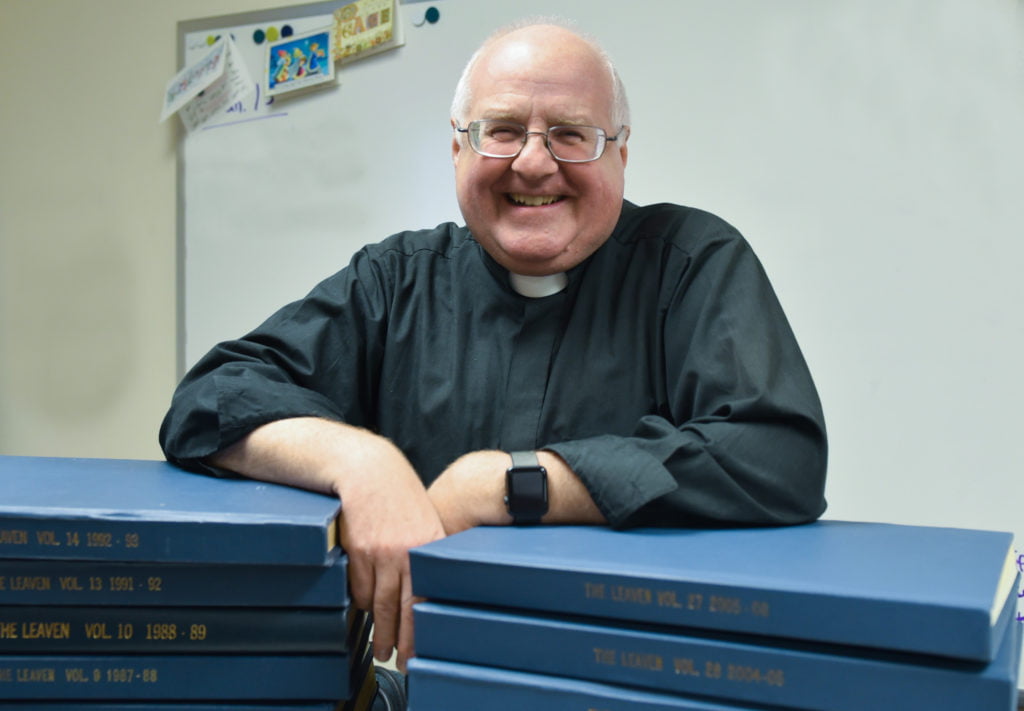
Father Mark Goldasich is the pastor of Sacred Heart parish in Tonganoxie. He has been editor of the Leaven since 1989.
by Father Mark Goldasich
You can’t escape it. News of the sexual abuse crisis in the Catholic Church seems to be everywhere: from the front pages of newspapers to reports on TV to the casual conversations of people. And, with the upcoming American bishops’ meeting in Baltimore this month, you can bet that things will only ratchet up.
That’s why over the next few weeks, The Leaven will be examining this crisis and its effects on the archdiocese in a series of stories called “Safeguarding the Faithful.” These stories, and more, will also be available here.
We’ll talk to local folks — clergy and laity alike — to surface the various issues and answer questions that you, or those you talk to, might have. And you might be surprised at the answers — because it’s not all gloom and doom.
Realistically, the sex abuse crisis in the church has changed nothing . . . and everything. What do I mean?
Well, it’s changed nothing that I’m called to do as a priest. In the past week, I’ve presided at Masses and funerals, heard confessions, baptized, prepared homilies, taught RCIA, filled out archdiocesan paperwork, prayed, etc.
And for the vast majority of Catholics, nothing has changed either. We’re still called to become more like Christ, by celebrating the sacraments and practicing the corporal and spiritual works of mercy . . . just like before the revelations of the Pennsylvania grand jury report or the shocking behavior of Archbishop McCarrick became public.
Yet, at the same time, everything has changed . . . and that’s a good, but often painful, thing. Since the 2002 “Charter for the Protection of Children and Young People” was approved by the bishops in Dallas, anyone working with youth in the archdiocese — whether paid or volunteers — must undergo Virtus training, a safe environment program.
Of the approximately 200,000 Catholics in the archdiocese, about 25 percent — some 46,000 — have gone through the program since 2003. In addition, 41,000 criminal background checks have been done on anyone ministering to or dealing with kids on behalf of the church. All of this says that the church is serious in its efforts to be vigilant in protecting the most vulnerable.
While progress has been made, more needs to be done. Are you surprised that this reminds me of a story?
A little girl was once sent to the store by her mom. When she didn’t return for quite some time, the mother got worried. Eventually, the little girl came home.
“Honey, where were you?” said her mother “The store isn’t far, and you were gone a long time.”
“I’m sorry, Mama, but on the way I saw Sally sitting on her porch. She was crying because her doll was broken, so I went over and helped her fix it,” said the little girl.
“How did you do that?” asked the mom.
“Well,” replied the little girl. “I couldn’t really fix it, so I just sat down and helped her cry.”
Honestly, I’ve shed a lot of tears over the abuse crisis. There have been tears of sorrow and compassion for all of the victims of abuse; tears of pain in reading a note from a Leaven reader who, because of the crisis, wrote: “For the first time in my life, I am not proud to be Catholic”; tears of frustration, along with those who have left the church, because change and transparency come so slowly; and tears of anger for those who perpetrated such horrific behavior.
But I’ve also had tears of determination, to keep reminding people that, as Jesuit Father Matt Malone wrote, “the Gospel tells us that even when the church fails to be faithful, God never ceases to be faithful to us. God is loving us even now. The pain of abuse and betrayal is real, but so is the healing power of love and reconciliation.”
Together, we’ll not only get through this devastating time, but will emerge better, trusting Jesus’ words will be fulfilled: “You will grieve, but your grief will become joy” (Jn 16:20).

